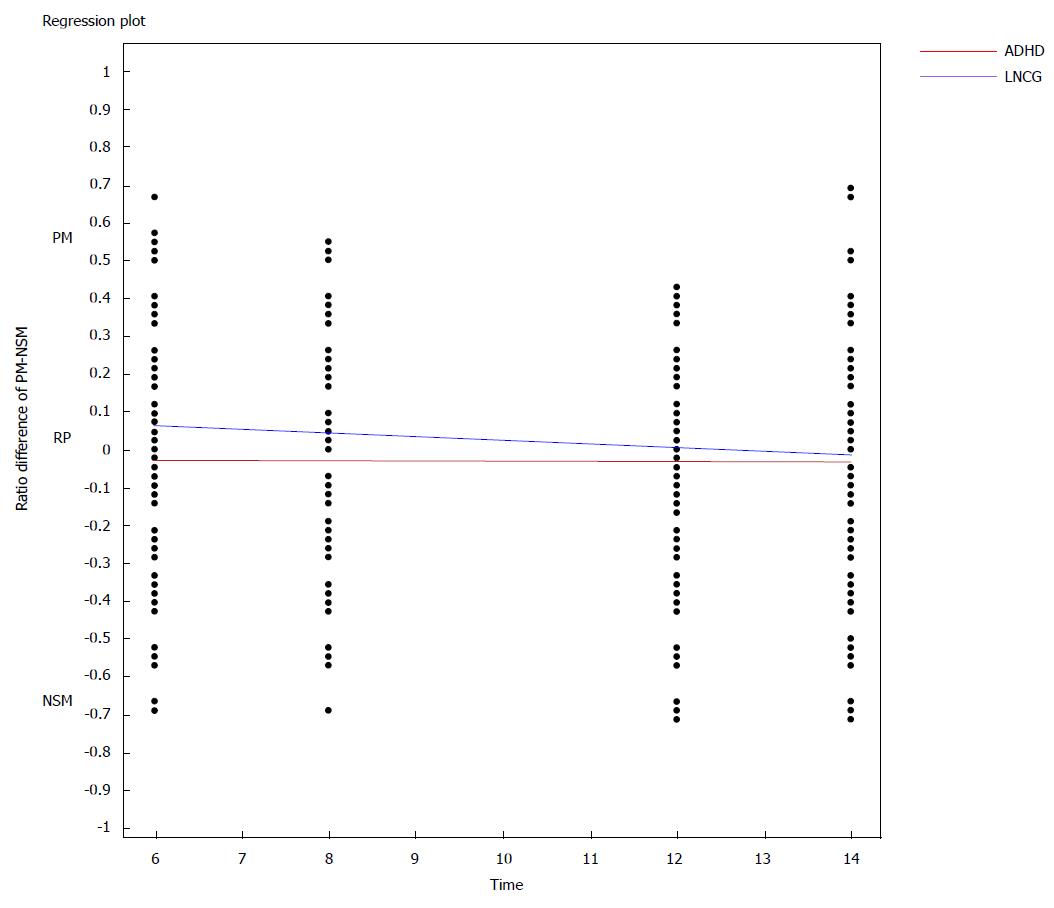Copyright
©The Author(s) 2015.
World J Psychiatr. Dec 22, 2015; 5(4): 412-424
Published online Dec 22, 2015. doi: 10.5498/wjp.v5.i4.412
Published online Dec 22, 2015. doi: 10.5498/wjp.v5.i4.412
Figure 1 Attention deficit hyperactivity disorder and local normative comparison group in relation to the relative proportion which represents the ratio of pathognomonic mania - the ratio of non- specific mania across all study subjects.
Positive score 0 to +1.0 is associated with more PM than NSM. Negative score -1.0 to 0 is as associated with more NSM than PM. Entire Model was significant RRM (df 3, 2523; F = 20.1; P≤ 0.0001). All Variables (Group status, assessments time, and the changes of group status over time) were linked to RP changes (effect of Groups Status: F = 39.9; P≤ 0.0001- effect of Time: F = 14.7; P≤ 0.0001, and the interaction of Group × Time: F = 12.1 P≤ 0.0005). ADHD patients started with a preponderance of NSM over PM symptoms and the LNCG with a preponderance of PM over NSM symptoms, but the ratios converged over time. RP: Relative proportion; PM: Pathognomonic mania; NSM: Non- specific mania; ADHD: Attention deficit hyperactivity disorder; LNCG: Local normative comparison group.
- Citation: Elmaadawi AZ, Jensen PS, Arnold LE, Molina BS, Hechtman L, Abikoff HB, Hinshaw SP, Newcorn JH, Greenhill LL, Swanson JM, Galanter CA. Risk for emerging bipolar disorder, variants, and symptoms in children with attention deficit hyperactivity disorder, now grown up. World J Psychiatr 2015; 5(4): 412-424
- URL: https://www.wjgnet.com/2220-3206/full/v5/i4/412.htm
- DOI: https://dx.doi.org/10.5498/wjp.v5.i4.412









